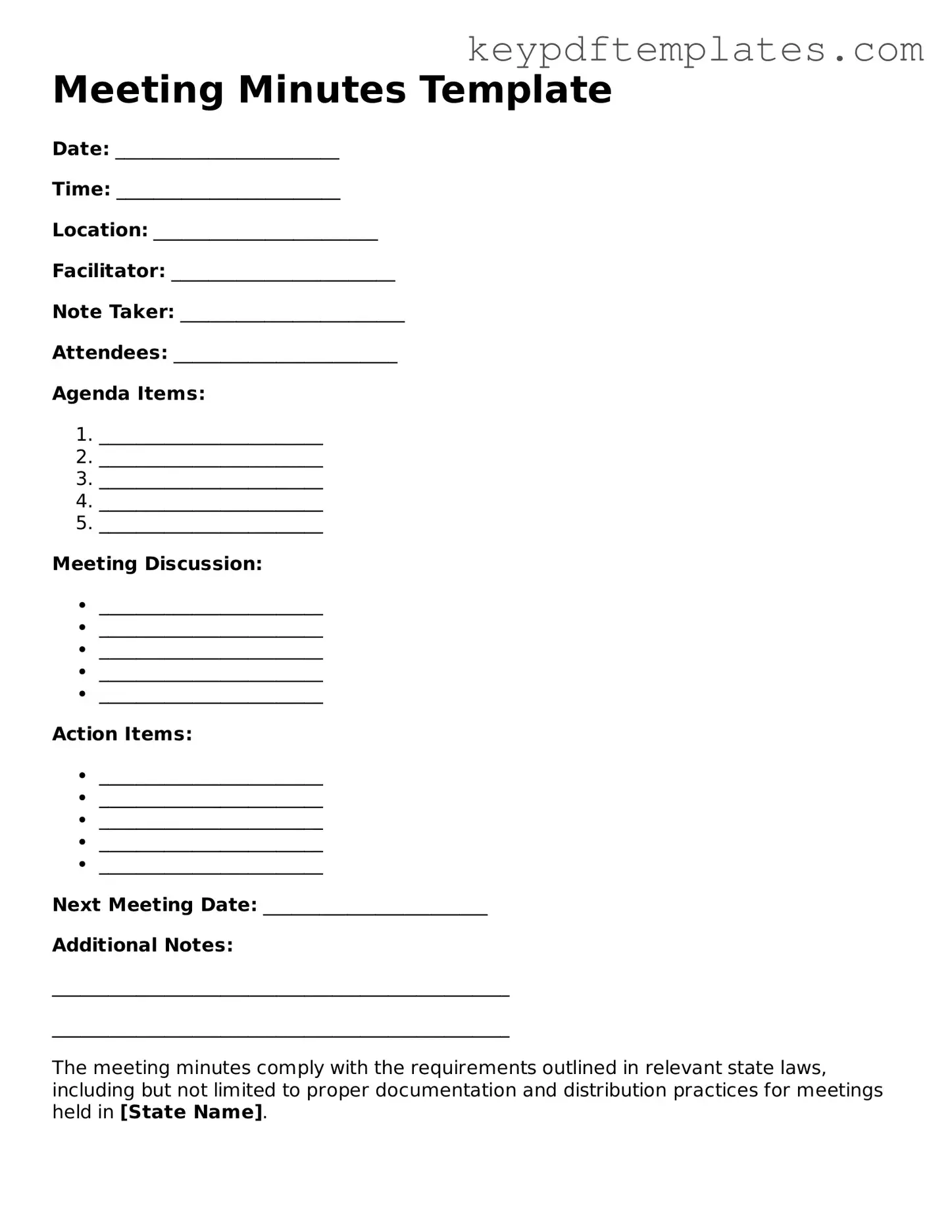Printable Meeting Minutes Template
The Meeting Minutes form is a document used to capture the key points discussed during a meeting. It serves as an official record, ensuring that important decisions and action items are documented for future reference. By using this form, teams can maintain clarity and accountability in their discussions.
Modify Document Online
